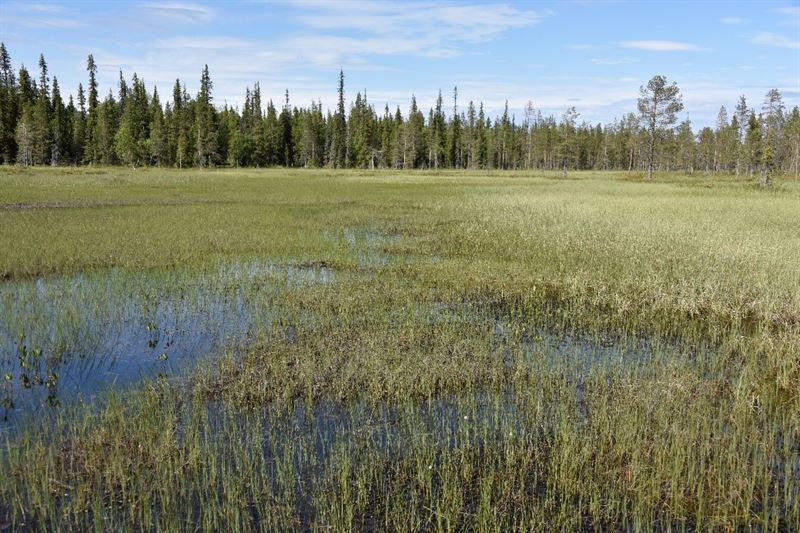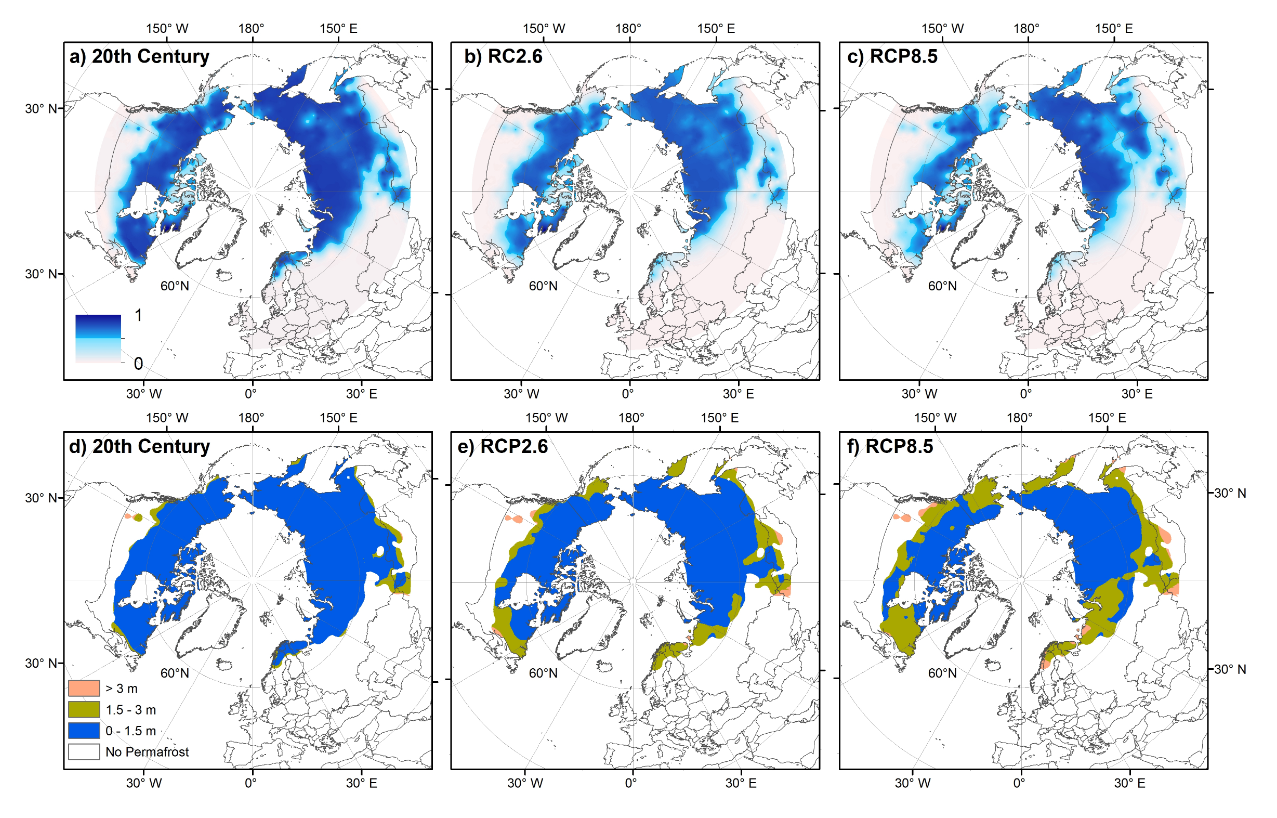On the 1st of April 2020, Nunataryuk's Nitin Chaudhary (WP1) and Sebastian Westermann (WP1,3,6) among a team of nordic researchers of the University of Oslo published a paper in Global Change Biology Journal about modelling past and future peatland carbon dynamics across the pan-Arctic. The model captured the broad patterns of long-term peatland carbon dynamics at different spatial and temporal scales, while simulating reasonable recent vegetation patterns and permafrost extent. Also, they found that peatlands on average continue to function as carbon sinks in different climate scenarios, but their sink capacity would substantially reduce under a high warming scenario after 2050.

Continue reading to experience Nitin write about his project:
The role of Peatlands in the carbon cylce
Peatlands comprise 30% of the present day soil organic carbon pool and are considered one of the biggest carbon reserves in the terrestrial ecosystem. They are also a major source of methane, a potent greenhouse gas. In many peatlands, recent observations show that the vegetation structure, hydrology, and carbon balance are rapidly changing. These ongoing changes in many peatlands will affect the land-atmosphere carbon balance and trigger some pertinent climate-relevant feedbacks. Feedbacks are important interactions in the Earth system which can amplify or dampen the effects of climate forcings. The higher carbon emissions from peatlands as a result of climate warming has the potential to have strong positive feedbacks to climate change. On the other hand, elevated concentrations of CO2 in the atmosphere together with an increase in moisture conditions influenced by permafrost degradation and higher precipitation rates will promote plant growth and peat accumulation. This, in turn, enhances the carbon uptake capacity of many peatlands and will negatively feedback to climate patterns. In addition, increase in active layer depth or soil moisture due to temperature-driven permafrost degradation together with higher precipitation rates will lead to higher methane emissions which will further accelerate the warming. These competing hypotheses need to be tested by taking the interactions between peatland carbon cycles and climate into account.
About the model
To understand the effects of peatland generated feedbacks, the existing Earth system models need to include peatlands as a separate land surface type. However, due to the absence of any comprehensive Earth system models with the representation of detailed peatland and cryospheric processes, our understanding of these hypothesized peatland-mediated feedbacks at regional and global scales is limited. I have developed a peatland-vegetation model (LPJ-GUESS) which showed a reasonable demonstration of capturing the right carbon accumulation rates and permafrost dynamics at different spatial and temporal scales. The model also demonstrated many important phenomena as ‘hump-backed’ relationships between the average rate of peat formation and water table position, cyclicity among micro-formations, internal eco-hydrological feedbacks and multi-directionality within many peatlands. In this project, I propose that the existing model will be strengthened by including detailed methane dynamics. The updated and modified scheme will then be translated to regional Earth system models in order to understand the effects of peatland-mediated feedbacks to future climate state. A similar coupling has already been carried out between a regional climate model (RCA) and LPJ-GUESS (without peatland).
Using this model, the future climate state over the European continent by including the vegetation-climate interactions (RCA-GUESS) was simulated. The study showed that there would be an additional amplification and dampening of CO2 induced warming over different locations of Europe, which thereby will make a substantial difference in average and seasonal regional temperature if the vegetation-climate interactions are considered. Subsequent studies, using variants of regional Earth system model (RCA-GUESS), demonstrated that feedbacks generated as a result of land-atmosphere interactions are important to regional climates in high latitude regions, tropical Africa and South America creating a substantial difference in temperature and precipitation rates in the respective climate domains. With the peatland extension that I propose here, the coupled regional Earth system model will be strengthened to address the issues related to short-term and long-term effects of peatland dynamics on regional climate. The learnings from this progress will be transferred to land-surface module of global Earth system model for the global application. The coupled models will be employed in the pan-Arctic region and globally to quantify the magnitude, direction, and strengths of peatland C-climate feedbacks.

Further, we are proud to announce, that Nitin got granted a 3 million SEK (early-career grant) of FORMAS, the swedish research council for sustainable development, for a maximum of 3 years. This means he will be able to continue his research on peatland modelling and climate change.
Project Title: "Quantification of peatland-mediated feedbacks to the climate system"
The recent changes in climate and land use patterns have disturbed the Earth's climate-carbon cycle equilibrium. These changes trigger potentially important land-surface feedbacks, which will further modify the Earth's climate. The ongoing changes in peatland carbon balance as a result of climate warming have the potential to strong positive and negative feedbacks to climate, but these impacts are poorly constrained. To assess the importance of these feedbacks, the interactions between peatland carbon cycle and climate should be taken into account. However, the absence of peatlands in current Earth system models limits our understanding of the peatland-mediated feedbacks at different scales.
The peatland model describd above will be further improved and employed to quantify the peatland-mediated feedbacks when coupled with regional climate model. The results of model simulations will increase our understanding of land-surface interactions and their impacts on climate and the carbon cycle. This project will be carried out at Lund University from 2020-2022 which is one of the leading organizations in the field of Earth system modelling. Nitin will collaborate with researchers from the University of Copenhagen and Leicester. They will support him with datasets and provide relevant inputs during the model development and validation stages.


